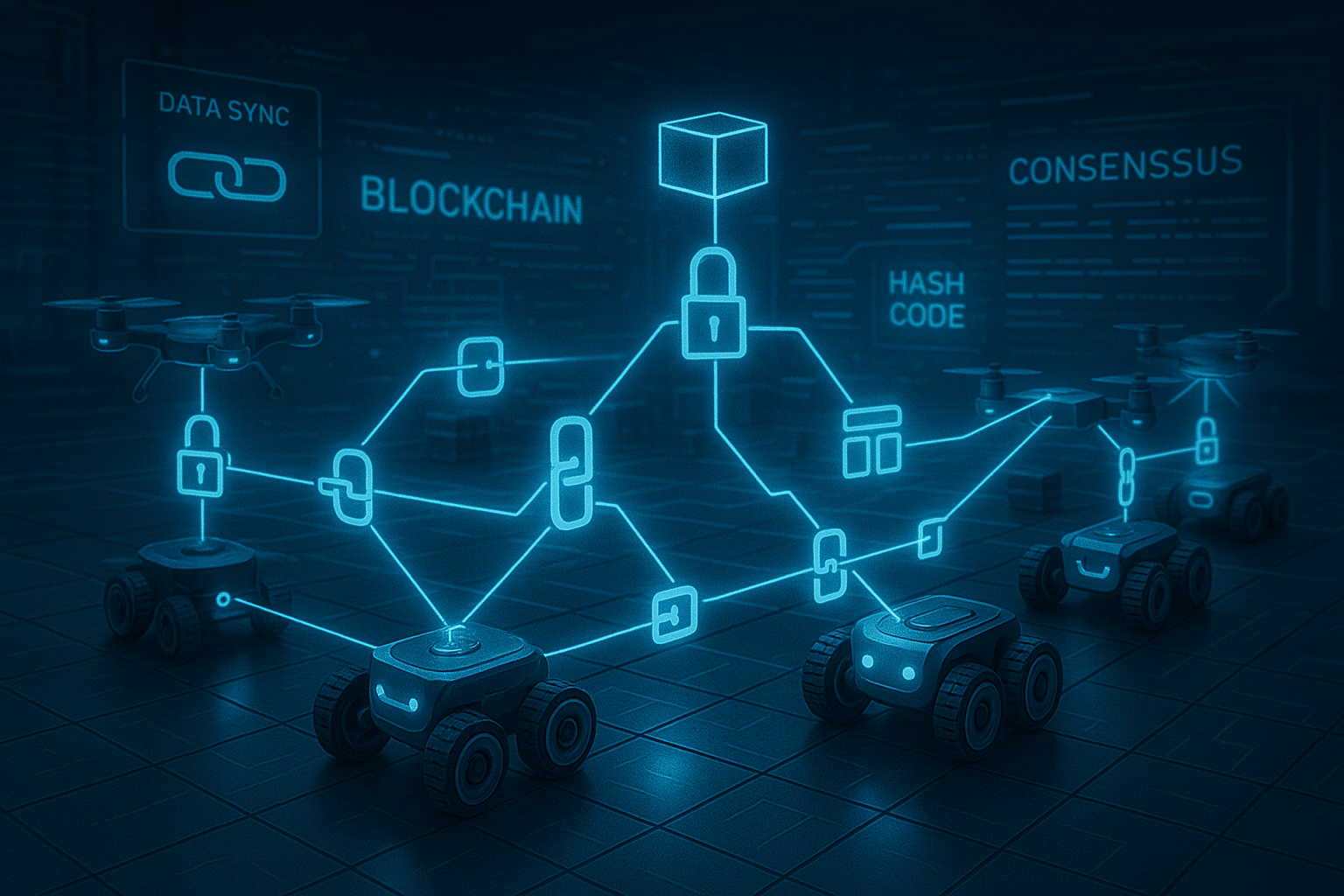Robots teaming up in groups—known as swarm robots—are now a reality, not just something from sci-fi stories. These tiny machines can team up to handle tricky jobs well, from finding people after disasters to making warehouses run smoother. But there’s a challenge: how can we make sure these swarms work ** , and without someone bossing them around**?
That’s where blockchain tech comes in—a safe spread-out system that experts are now looking at to help robots work as a team with trust, precision, and the ability to bounce back from problems.
🐝 What Are Swarm Robots?
Swarm robots are a bunch of small light, self-running robots that team up with each other. They take their cues from nature—like how ants, bees, or birds work together .
Main features:
- Decision-making without central control
- Group actions
- Growth potential and backup systems
- Team efforts in real time
These robots can check out disaster areas run farms, or keep watch without needing one person in charge.
🔒 How Can Blockchain Help Swarm Robots?
Swarm robots work well together, but keeping them safe and on track is still tough. For instance:
- What stops one robot from getting hacked and leading the others astray?
- How can robots trust shared info without someone in charge?
- How do you check if a job’s done in a clear way?
Blockchain gives a secure shared record where robots can:
- Post updates
- Check data
- Prove who they are to each other
- Log what they do so it can be checked later
This allows robots to have confidence in one another and work even in tough or unpredictable settings.
🧠 How Blockchain Boosts Swarm Robots
1. ✅ Group Decision Making
Every robot can suggest or vote on a job, and the group can reach a decision through smart contracts. They don’t need a main server to run things.
2. 🔐 Protected Talks
Blockchain codes the data shared between robots ensuring no unwanted robot can step in or send fake orders.
3. 🧾 Permanent Job Records
Robots can log all their actions on the blockchain. This creates a complete history of what happened, who did it, and when—helping with mission tracking and audits.
4. 🤝 Authentication & Identity
The blockchain gives each robot a secure digital identity, which lowers the chance of bad devices pretending to be or taking over other robots.
5. ⛓️ Smart Contracts for Automation
Smart contracts let robots start actions on their own when specific things happen—like giving out resources after a job is done right.
🚀 Real-World Applications
Here’s how people are trying out this tech in real life:
- Disaster Response: Swarm drones can search buildings that have collapsed, record data in a secure way, and work together without needing unstable networks.
- Military and Defense: Robots can move in groups while they check orders in a secure manner, which reduces the chances of being tricked or fooled.
- Agriculture: Swarm robots can plant seeds, keep an eye on soil, and exchange information about crop health without people stepping in.
- Warehouse Automation: Robots that work alongside humans (cobots) use blockchain to handle inventory data securely and as it happens.
⚙️ Challenges and Future Outlook
Though it shows promise, blockchain + robotics still faces some obstacles:
- Scalability: Blockchain networks need to handle quick communication among numerous robots.
- Latency: Swarm decisions require real-time processing—blockchain needs to be fine-tuned for speed.
- Energy Consumption: Small low-power robots can’t support heavy computing—new lightweight consensus algorithms are under development.
Despite these challenges, the merging of blockchain with robotics continues to gain traction in studies and test programs, and the outlook seems promising.
